-
The potential for self-driving cars in the U.K.
Researchers explored what it would take for driverless vehicles to become commonplace on U.K. roads; they highlight the potential benefits of self-driving cars, such as increased road safety and less traffic, but stress that a range of barriers need to be overcome before people buy them en masse
-
-
Israel to test advanced Arrow 3 anti-missile missile
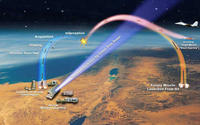
The official in charge of developing Israel’s missile defense system said yesterday that in the coming days Israel would conduct a test of the advanced Arrow 3 missile; the Arrow 3 has been developed to shoot down Iranian ballistic missiles on their way to Israel; the Arrow 3 has been designed to intercept missiles carrying nuclear warheads – and intercept them outside the atmosphere
-
-
Andrew Cuomo heads to Washington to push for disaster aid
Governor Andrew Cuomo says that New York needs $33 billion to cover storm cleanup and another $9 billion for new programs to protect against future storms; Governor Chris Christie of New Jersey says his state will need $36.8 billion to recover from Sandy; it is not clear how Congress and the administration, locked in a tug of war over differing deficit cut plans, will respond
-
-
Tunnel disaster shows age of Japan’s infrastructure, but there is no money to fix it
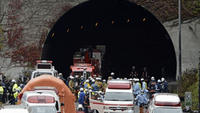
The collapse of hundreds of concrete ceiling slabs in a tunnel just outside Tokyo has focused the attention of the Japanese on the country’s has citizens calling for Japan to fix its aging infrastructure; the amounts of money needed for this refurbishing are large, and , but signs indicate that Japan may not have the money, as the public debt is already more than 200 percent of its Gross Domestic Product (GDP)
-
-
Life of U.K. nuclear power plants extended
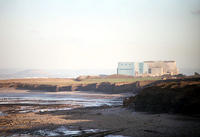
U.K. operator EDF Energy has announced it will extend the expected operating life of two of its nuclear power stations by seven years; Hinkley Point B and Hunterston B power stations are now expected to remain operational until at least 2023, generating enough electricity for around two million homes; the decision follows the five year extensions to Heysham 1 and Hartlepool announced in 2010 and come after extensive reviews of the plants’ safety cases and continuing work with the independent nuclear regulator
-
-
Squirrels-inspired deceptive robots to help the military
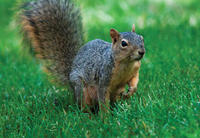
Using deceptive behavioral patterns of squirrels and birds, researchers have developed robots that are able to deceive each other; the applications could be implemented by the military in the future
-
-
Responding to future oil spills: lessons learned from Deepwater Horizon
A special collection of articles about the Deepwater Horizon oil spill provides the first comprehensive analysis and synthesis of the science used in the unprecedented response effort by the government, academia, and industry;with the benefit of hindsight and additional analyses, these papers evaluate the accuracy of the information that was used in real-time to inform the response team and the public
-
-
Below Russian Far East there is a seismic hazards that could threaten Pacific Basin
For decades, a source of powerful earthquakes and volcanic activity on the Pacific Rim was shrouded in secrecy, as the Soviet government kept outsiders away from what is now referred to as the Russian Far East; research in the last twenty years, however, has shown that the Kamchatka Peninsula and Kuril Islands are a seismic and volcanic hotbed, with a potential to trigger tsunamis that pose a risk to the rest of the Pacific Basin
-
-
Fabric for military uniforms to repel chemical and biological agents
Military uniforms of the future may offer a new layer of critical protection to wearers; the fabric will be able to switch reversibly from a highly breathable state to a protective one in response to the presence of the environmental threat without the need for an external control system; in the protective state, the uniform material will block the chemical threat while maintaining a good breathability level
-
-
Mixing oil with dispersant increased toxicity to Gulf’s ecosystems
If the 4.9 million barrels of oil that spilled into the Gulf of Mexico during the 2010 Deep Water Horizon spill was an ecological disaster, the two million gallons of dispersant used to clean it up apparently made it even worse – fifty-two-times more toxic
-
-
Fracking in Michigan
In hydraulic fracturing, large amounts of water, sand and chemicals are injected deep underground to break apart rock and free trapped natural gas; though the process has been used for decades, recent technical advances have helped unlock vast stores of previously inaccessible natural gas, resulting in a fracking boom; researchers are examining the benefits of fracking for Michigan
-
-
Post-Sandy insurance rates increase may make coastal living unaffordable
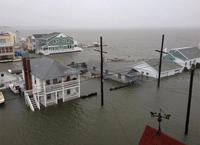
Residents of New York and New Jersey are still coping with the destruction Hurricane Sandy caused, but home and business owners alike will soon face another burden: rising insurance rates and new building codes and requirements that could threaten many that live and work in the coastal areas of the two states
-
-
Lloyd’s says countries are under insured against natural disasters
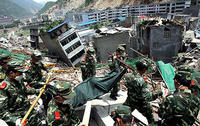
Lloyd’s of London, the world’s largest insurance company, has warned seventeen countries that a $165 billion global insurance deficit leaves them vulnerable to long-term natural disaster costs; Lloyds says the world may not be able to afford another year like 2011, when natural disasters such as the earthquake and tsunami in Japan and the floods in Thailand caused $4.6 trillion dollars of damage to infrastructure, homes, and businesses, and which resulted in the largest disaster claims ever
-
-
The debate over radon as an earthquake predictor continues
Scientists have been interested in using radon emissions to predict earthquakes since the 1980s, but no solid evidence ever came to support it and the idea was abandoned by most in the field during the 1990s; now, scientists are looking again at radon as an earthquake predictor
-
-
Increase in negative messages about Muslims in the media: study

Organizations using fear and anger to spread negative messages about Muslims have moved from the fringes of public discourse into the mainstream media since the 9/ 11 attacks; to reach these conclusions, a University of North Carolina sociologist used textual detection software to track the influence of 1,084 press releases about Muslims from 120 organizations on more than 50,000 television transcripts and newspaper articles produced from 2001 to 2008
-
More headlines
The long view
Encryption Breakthrough Lays Groundwork for Privacy-Preserving AI Models
In an era where data privacy concerns loom large, a new approach in artificial intelligence (AI) could reshape how sensitive information is processed. New AI framework enables secure neural network computation without sacrificing accuracy.
AI-Controlled Fighter Jets May Be Closer Than We Think — and Would Change the Face of Warfare
Could we be on the verge of an era where fighter jets take flight without pilots – and are controlled by artificial intelligence (AI)? US R Adm Michael Donnelly recently said that an upcoming combat jet could be the navy’s last one with a pilot in the cockpit.
The Potential Impact of Seabed Mining on Critical Mineral Supply Chains and Global Geopolitics
The potential emergence of a seabed mining industry has important ramifications for the diversification of critical mineral supply chains, revenues for developing nations with substantial terrestrial mining sectors, and global geopolitics.
AI and the Future of the U.S. Electric Grid
Despite its age, the U.S. electric grid remains one of the great workhorses of modern life. Whether it can maintain that performance over the next few years may determine how well the U.S. competes in an AI-driven world.
Using Liquid Air for Grid-Scale Energy Storage
New research finds liquid air energy storage could be the lowest-cost option for ensuring a continuous power supply on a future grid dominated by carbon-free but intermittent sources of electricity.
Enhanced Geothermal Systems: A Promising Source of Round-the-Clock Energy
With its capacity to provide 24/7 power, many are warming up to the prospect of geothermal energy. Scientists are currently working to advance human-made reservoirs in Earth’s deep subsurface to stimulate the activity that exists within natural geothermal systems.
